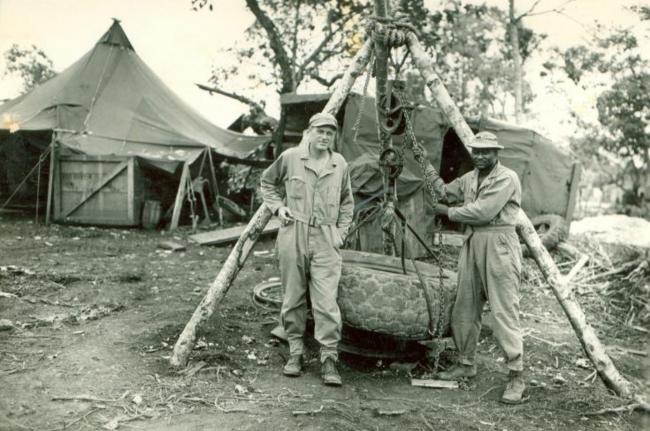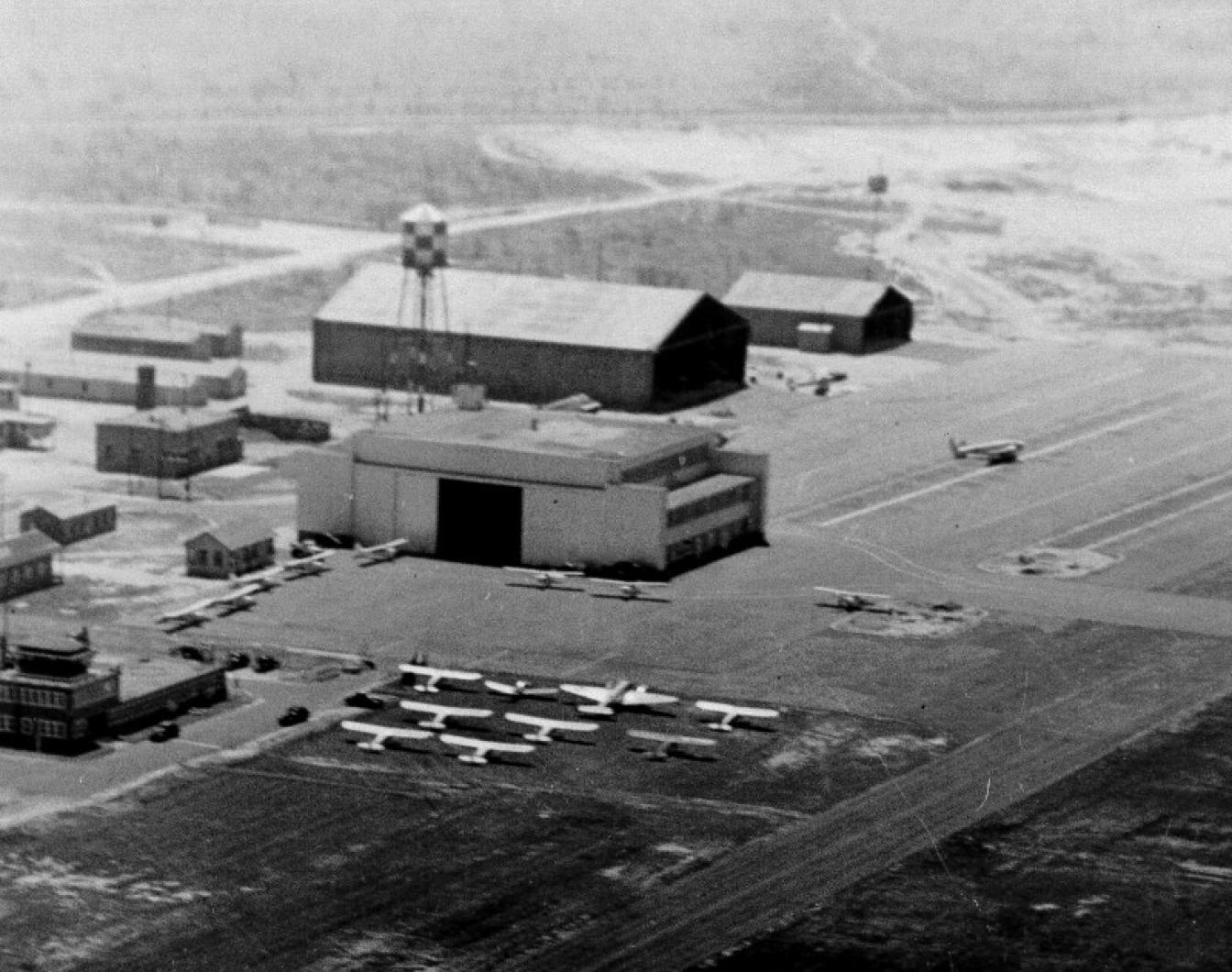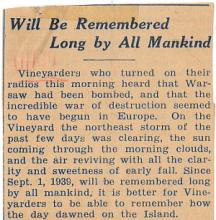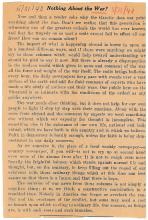The airfield on the central plain of Martha’s Vineyard is beginning to shape up as something more than raw earth, mud, and the destination of building materials trucked over the roads from the steamboat landing. The time has arrived, also, when the United States Navy feels that the public may know something of this project which has brought life and a strange new pattern to a domain where only the hawks, rabbits and wildflowers have dwelt for many generations.
The airfield development is officially known as the United States Naval Auxiliary Facility here, and Lieut. C. M. Webster, U.S.N.R., is officer in charge.
Enough barbed wire to stretch the length of the Vineyard two or three times surrounds the enclosure. Inside the high fence, which is guarded at all times against unauthorized persons, is the airfield, carved out of a wilderness of scrub oak and a few larger trees. The field will be completed within a period of a few weeks, and it will contain “complete facilities for the operation and handling of aircraft,” to quote an official explanation. One of the most interesting aspects to Vineyarders is that the airfield will be completely self-sustaining insofar as its operations and daily life are concerned. It is an island within an Island.
Facilities Will Be Complete
There are quarters for officers and men, a mess hall, hospital, shops, complete fire department with equipment and housing, a fine water supply with pumping station and power plant, and all the smaller but necessary establishments, grouped around a central administration building. The field, in short, runs through the general catalog of a modern military airfield.
Early this week dust lay inches deep in the roadways and around the buildings, whereas a few weeks ago there were seas of Vineyard mud caused by the alternate freezing and thawing of the sandy soil. Once the frost let go, the moisture departed in a hurry leaving amazed workmen in a region apparently as arid as it had been wet before. Without actually entering the enclosure, no one could appreciate the amount of work which has been required to build the field. The broad runways, stretching so far that they pinch out to nothingness in the distance, are hidden by the heavy screens of brush and trees still remaining. Trucks and rollers moving along these growing runways cannot be seen or heard from outside, and only the plume of smoke from the asphalt mixer betrays the activity in the midst of the scrub.
Later, perhaps, some or all of this brush will be cleared and a view of the field opened to the highways. As it stands now, there will be less to see in a few weeks than at present, for the reason that the buildings are painted a shade which will blend perfectly with surrounding foliage, and the smoke from the asphalt plant will cease to rise once the runways and roads are completed.
Although the field is not yet in operation, its links with the Island have already been provided. A driveway to connect the field with the main highway is to be completed, and the fire department of the field will enter into some cooperative arrangement with the civilian fire departments of the Island towns. Very probably a similar understanding between the field medical staff and the Martha’s Vineyard Hospital staff will be arranged.
Rivals for Red-Tailed Hawks
The red-tailed hawks will soon have giant competitors in flight above the great plain, and the completion of the field will mark the first successful undertaking in a long sequence of failures on this spreading tract. Homesteads, farms, planting and real estate ventures, all have failed miserably and the traces of these ventures have been obliterated by nature so thoroughly that it is difficult to find any of them today.
Modern methods and the might of the government have been capable of “meeting and overcoming the difficulties which always frustrated every effort to develop the great plain. Trucks and jeeps roll up and down where the scrub oak grew twisted and stubborn a few months ago. Leaf mould of centuries has given place to asphalt surfacing and the arid-looking plain has given up its store of water, concealed since the last visit of the glacier.
Soon the gray and silver war-birds will soar above the plain, and the contractors and their crews will be replaced by naval officers and men. Those flights are what the Vineyard would like to read about. Well, so would Hitler, and that is why there is no mention of them here.











Comments